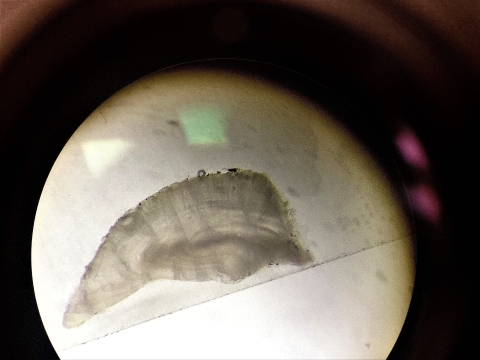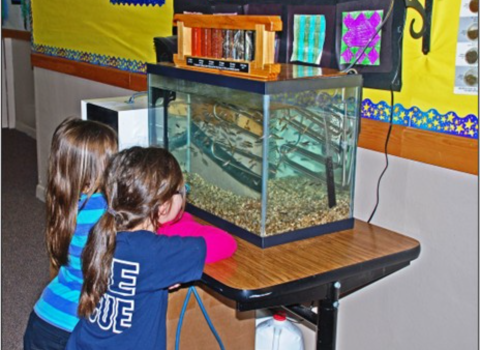What do you do when a group of people are looking at the same thing but have a different opinion on what they’re looking at? You get to the heart of it and get on the same page. The inner ear of carp holds key information on how old they are but determining the age of a fish is tricky. Similar to a tree, the ear stone, or otolith, creates growth rings for each year they survive. Go ahead-- try counting the rings on the otolith yourself. Not so easy, is it...?
There are many different approaches that can be used, and each approach has unique biases and drawbacks. Some approaches underestimate the age of invasive carps while others may take lots of time and resources to get accurate age estimates. The challenge for fisheries scientists is determining an accurate, reliable, and repeatable approach and then sharing those findings with partners so that our partnerships can begin adopting these best practices.
Aging invasive carp is essential to understanding how long they survive in their invaded territories. To refine methods used to estimate the ages of invasive carp captured in the Upper Mississippi River, staff from the La Crosse Fish and Wildlife Conservation Office (FWCO) hosted partners from Iowa State University and Illinois Natural History Survey in mid-March 2023 for a one-day workshop. All three partners currently monitor invasive carp and collect information on the demographic characteristics (e.g., length, weight, age, sexual maturity, etc.) of this population. Together we were able to “get on the same page” concerning how we collect fish ageing structures (otoliths), how those structures are processed in the lab, and how the growth rings (annuli) are interpreted to estimate individual fish ages.
Ageing workshops are an important practice for exchanging ideas and promoting best practices among different groups of people. These workshops have been used in marine fisheries organizations like the Atlantic States Marine Fisheries Council for decades to help encourage standardization of aging techniques for fish and invertebrate species among teams spread across state and national boundaries. These events often draw together some of the world’s leading experts in fish aging techniques and help to develop a community among managers and researchers that works to improve the science of aging fish.
Our workshop was a great success. We settled our teams on a solid approach to determine invasive carp ages. Plus, we got a chance to get to know each other over a potluck lunch served by the FWCO staff!




